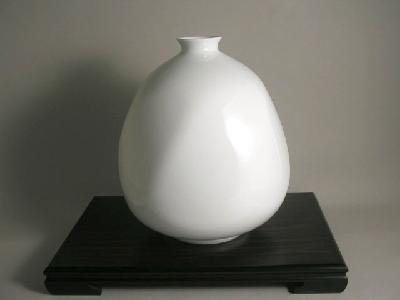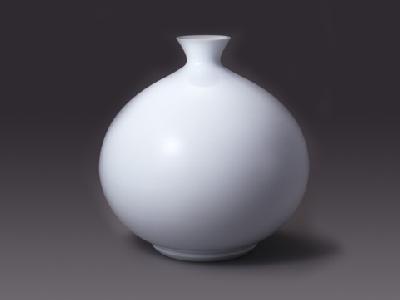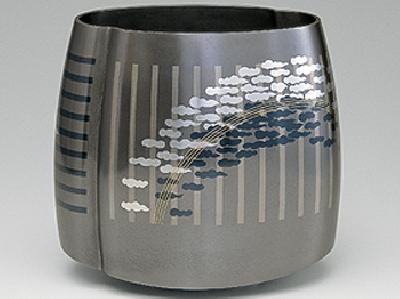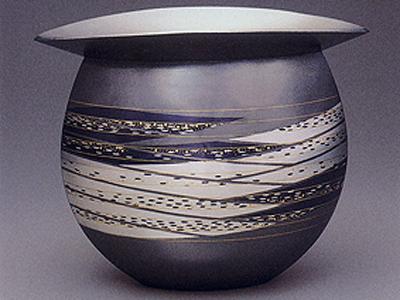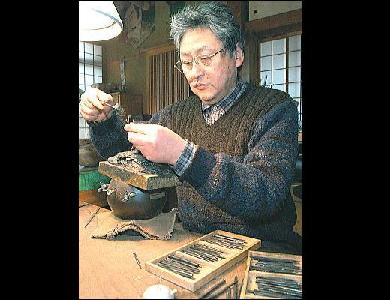|
Jusetsu Miwa was born in Hagi in Yamaguchi Prefecture, in the 43rd year of the Meiji period (1910). In Showa 58 (1983), he was designated as a Living National Treasure because of his expertise as a craftsman of Hagi ware.
After graduating from junior high school, he studied under his older brother, the 10th Kyusetsu, at the Miwa kiln, one of the best kilns for Hagi ware. After he was designated a Living National Treasure (following his older brother), he renamed himself Jusetsu. He is now 96 years old, but still an active potter.
Jusetsu Miwa took over 'kyusetsu white', a glaze made from straw ash, which had been acquired by his brother. With this glaze, he introduced something new to Hagi ware and established his own quite different style. It is true that he inherited the 400-year-old tradition of Hagi ware, but his works are far from just imitations. Indeed, they are so original as to attract worldwide admiration.
After graduating from junior high school, he studied under his older brother, the 10th Kyusetsu, at the Miwa kiln, one of the best kilns for Hagi ware. After he was designated a Living National Treasure (following his older brother), he renamed himself Jusetsu. He is now 96 years old, but still an active potter.
Jusetsu Miwa took over 'kyusetsu white', a glaze made from straw ash, which had been acquired by his brother. With this glaze, he introduced something new to Hagi ware and established his own quite different style. It is true that he inherited the 400-year-old tradition of Hagi ware, but his works are far from just imitations. Indeed, they are so original as to attract worldwide admiration.
| [+ADDRESS] | 
|



